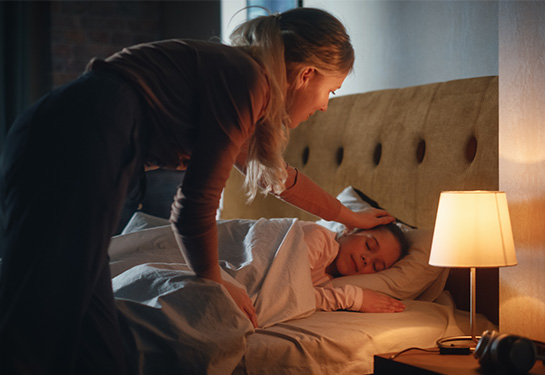Exploring the relationship between pediatric neuromuscular conditions and sleep-disordered breathing
In a review published in the journal Children, UC Davis pulmonologists explored the current diagnostic tools and treatments for pediatric patients with neuromuscular diseases and sleep-disordered breathing. These can include obstructive sleep apnea, sleep-related hypoventilation (shallow breathing with high carbon dioxide in the blood), hypoxemia (reduced blood oxygen) and other related conditions. Pediatric neuromuscular diseases that can affect breathing include myasthenia gravis, myotonic dystrophy, Duchenne muscular dystrophy and inflammatory myopathy.
“Sleep disordered breathing is quite common in children with neuromuscular conditions, such as Duchenne muscular dystrophy, myasthenia gravis and myotonic dystrophy,” said Craig McDonald, professor and chair in the Department of Physical Medicine & Rehabilitation and co-author on the paper. “In some cases, the disordered breathing is an early sign the child has a neuromuscular disease.”
The study was initiated, in part, by first author Ambika Chidambaram, a pediatric pulmonologist and sleep medicine specialist. Chidambaram and other pulmonologists play an essential role in supporting children with breathing difficulties.
“The respiratory system is important because the rib cage is made of bones and supported by muscles, and we need healthy muscles to ensure healthy breathing,” said Chidambaram. “If the child has a neuromuscular disease, then, depending on the type of disease, the child is at risk for respiratory failure due to weakness in the respiratory muscles that support breathing.”
Depending on the type of neuromuscular disease, breathing tends to first become abnormal during sleep. Clinicians conduct sleep studies to test for breathing problems and potential blood oxygen and carbon dioxide issues. One important tool is diagnostic polysomnography, which measures oxygen, carbon dioxide, heart rate, brain waves and eye and leg movements during sleep.
The paper notes that children experiencing disordered breathing often snore, gasp for air, wake up frequently and experience daytime sleepiness. However, the condition can manifest differently in specific neuromuscular conditions. Even for children with the same disease, symptoms can vary based on their age and disease progression.
The most important treatment options are non-invasive ventilatory support therapies, which use a machine to support breathing through a mask. Some children require a tracheostomy, an artificial airway that provides breathing support directly into the windpipe.
One of the major barriers is access to care. Sleep studies that include carbon dioxide monitoring cannot be done remotely for children, requiring some patients and families to travel for several hours to get care.
“Sleep labs for children are primarily available in major cities, so access for kids living in rural areas is difficult,” Chidambaram said. “Also, transporting children with neuromuscular disease is particularly difficult if they are non-ambulatory. They typically need one or more caregivers to get them into a car that can support a wheelchair to take them to a sleep lab.”
The authors look forward to technological advances that will support home sleep studies for pediatric patients. In addition, providers in the field are quite excited about emerging therapies that can treat spinal muscular atrophy and possibly other conditions.
“There are gene therapies being approved for children with muscular conditions, and that could change the natural history of the disease process,” said Chidambaram. “By modifying that natural history, these therapies have tremendous potential to improve sleep and reduce breathing issues.”





